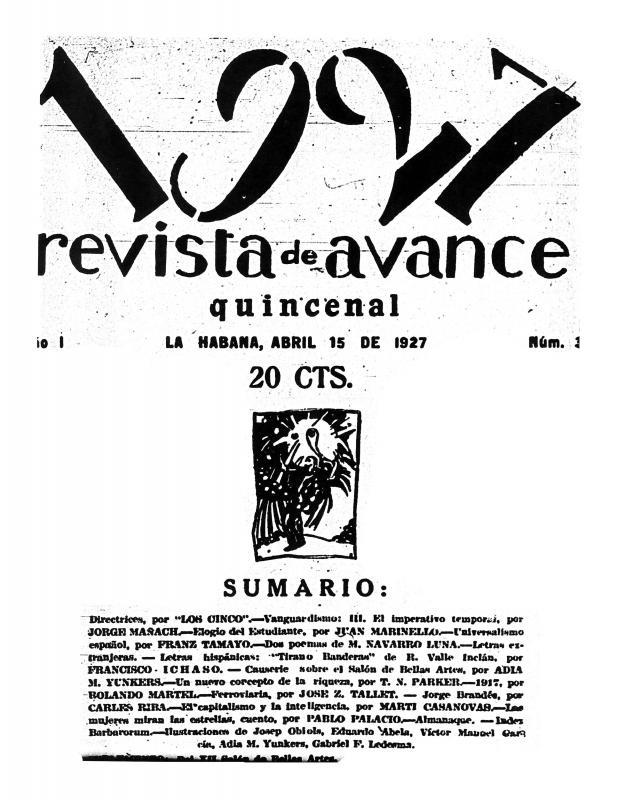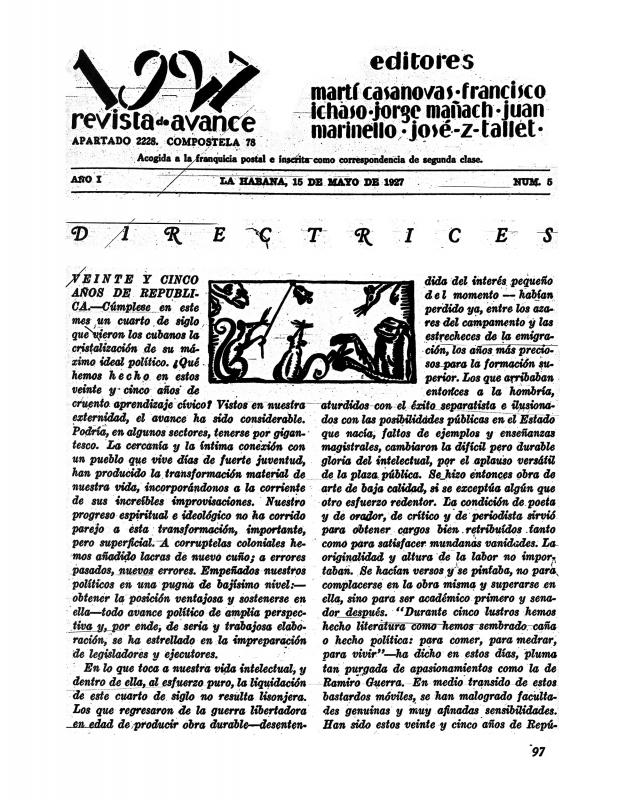The Revista de avance had a section entitled “Guidelines,” which included short informative articles or comments on matters or events related to the focus of the journal. In this section, the editors informed the reader about changes, clarification, and comments on previous articles or matters of interest, in the form of brief articles. In this issue, of particular importance was the article published about the deportation of the Catalan art critic and Revista de avance editor Martí Casanovas, who would be replaced by Félix Lizaso (1891–1967). Lizaso was a noteworthy Cuban journalist and member of the Grupo Minorista. He was an avid student of the life and work of José Martí, especially his work as an art critic. He was also cofounder of and a contributor to a whole list of journals in Cuba and in other Latin American countries. Another important item in this issue is the response to the article published in the Madrid-based journal La Gaceta Literaria, entitled “Madrid, meridiano intelectual de Hispanoamérica.” By touching a nerve—the issue of the cultural and intellectual independence of Latin American countries—the Gaceta article unleashed a heated debate among Latin American writers and artists. José Carlos González Boixo’s text, entitled “‘El Meridiano Intelectual de Hispanoamérica’: polémica suscitada en 1927 por ‘La Gaceta Literaria,’” analyzes the issue in depth. The article written by the editors of the Spanish journal questions the interest of Latin American intellectuals in Italian and French cultures, trying to warn them about the hegemonic perspective of France and Italy, where they could end up marginalized. On the contrary, the article proposes an involvement with Madrid, which would allow a reassessment and preservation of the Hispanic language and culture. In their response, the avance editors state that such paternalistic comments are evidence of the dilemma faced by Latin American intellectuals. On the one hand, they wish to be freed from the cultural and intellectual dominance of Spain, a country they consider tradition-bound and mediocre. On the other, as a result of their nationalist and pro-independence lines of thought, they are eager to differentiate themselves from the art and literary trends that have dominated the period.
[For further reading, see in the ICAA digital archive other “Directrices” published on: March 30, 1927 (doc. no. 1298727); April 15, 1927 (doc. no. 1298763); April 30, 1927 (doc. no. 1299725); May 15, 1927 (doc. no. 1299773); May 30, 1927 (doc. no. 1299841); August 15, 1927 (doc. no. 1299913); August 30, 1927 (doc. no. 1299981); and September 30, 1927 (doc. no. 1300074)].






